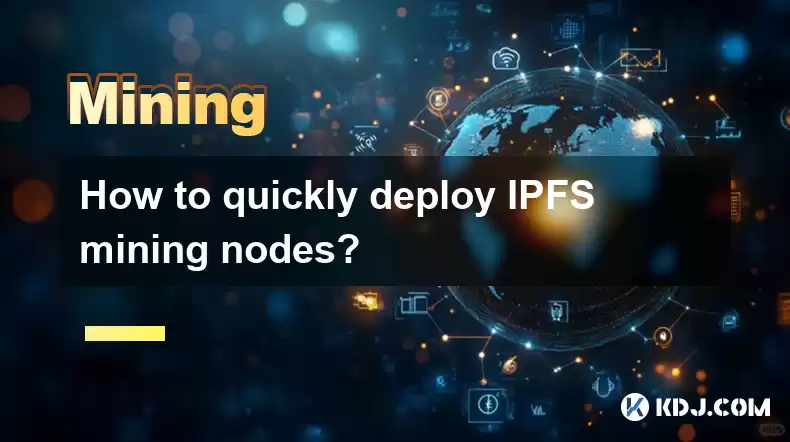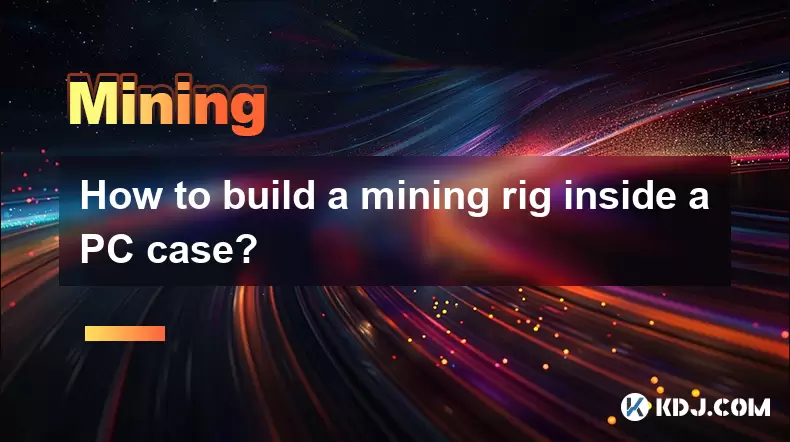-
 Bitcoin
Bitcoin $116800
0.06% -
 Ethereum
Ethereum $3916
2.20% -
 XRP
XRP $3.333
8.10% -
 Tether USDt
Tether USDt $1.000
0.02% -
 BNB
BNB $789.3
1.45% -
 Solana
Solana $177.6
2.58% -
 USDC
USDC $0.0000
0.02% -
 Dogecoin
Dogecoin $0.2232
4.03% -
 TRON
TRON $0.3384
0.01% -
 Cardano
Cardano $0.8005
4.26% -
 Stellar
Stellar $0.4651
11.58% -
 Hyperliquid
Hyperliquid $41.38
5.34% -
 Sui
Sui $3.828
2.87% -
 Chainlink
Chainlink $19.41
11.81% -
 Bitcoin Cash
Bitcoin Cash $581.4
0.02% -
 Hedera
Hedera $0.2623
3.12% -
 Avalanche
Avalanche $23.50
3.00% -
 Ethena USDe
Ethena USDe $1.001
-0.04% -
 Litecoin
Litecoin $121.8
0.85% -
 UNUS SED LEO
UNUS SED LEO $8.986
0.38% -
 Toncoin
Toncoin $3.359
1.47% -
 Shiba Inu
Shiba Inu $0.00001293
2.14% -
 Uniswap
Uniswap $10.61
4.95% -
 Polkadot
Polkadot $3.917
3.45% -
 Dai
Dai $1.000
-0.01% -
 Bitget Token
Bitget Token $4.461
1.26% -
 Cronos
Cronos $0.1516
2.47% -
 Monero
Monero $265.7
-5.07% -
 Pepe
Pepe $0.00001118
2.72% -
 Aave
Aave $283.4
3.76%
How to quickly deploy IPFS mining nodes?
Efficient IPFS node deployment involves selecting optimal hardware, setting up a suitable OS, installing IPFS software, configuring the node, joining the network, monitoring performance, and troubleshooting issues to maximize potential rewards.
Mar 05, 2025 at 10:24 am

Key Points:
- Choosing the right hardware for optimal IPFS node performance.
- Selecting a suitable operating system and setting up the environment.
- Downloading and installing the IPFS software.
- Configuring the IPFS node for efficient operation.
- Joining the IPFS network and optimizing for mining.
- Monitoring and maintaining your IPFS node for sustained performance.
- Addressing common challenges and troubleshooting solutions.
How to Quickly Deploy IPFS Mining Nodes
Deploying an IPFS mining node, while not directly "mining" in the traditional cryptocurrency sense, involves contributing storage and bandwidth to the decentralized network, potentially earning rewards through services like Filecoin. This process requires careful planning and execution. Let's break down how to achieve this quickly and efficiently.
1. Hardware Selection: The Foundation of Your Node
The speed and efficiency of your IPFS node heavily depend on your hardware. A powerful CPU, ample RAM (at least 8GB, ideally more), and a significant amount of storage space (SSDs are preferred for speed) are crucial. Network connectivity is also paramount; a fast, reliable internet connection with a high upload speed is essential for contributing to the network. Consider the amount of storage you wish to dedicate; the more space you provide, the more data you can store and the greater your potential rewards.
2. Operating System and Environment Setup
While you can run IPFS on various operating systems, Linux distributions (like Ubuntu) are generally preferred for their stability and command-line interface. Setting up a virtual machine (VM) can offer a safe and isolated environment for your node, preventing potential conflicts with your main system. Ensure your system is updated with the latest security patches before proceeding. Familiarity with the command line will significantly simplify the deployment process.
3. Downloading and Installing IPFS
Download the appropriate IPFS software package for your chosen operating system from the official IPFS website. Follow the installation instructions carefully. Most distributions offer straightforward installation methods, either through package managers or direct downloads. Ensure you're downloading from a trusted source to avoid malicious software. After installation, verify the installation by running the ipfs version command in your terminal.
4. Configuring Your IPFS Node
Once installed, you need to configure your node. This might involve setting up a specific data directory where your IPFS data will be stored. You can also configure advanced options like bootstrapping nodes to connect to the network more efficiently. Refer to the official IPFS documentation for detailed configuration options and best practices. Proper configuration is vital for optimal performance and network connectivity.
5. Joining the IPFS Network and Optimizing for Mining
After configuration, you can start your IPFS node using the command ipfs daemon. This command starts the background process that keeps your node running and connected to the network. To maximize your contribution and potential rewards, ensure your node is actively connected and remains online consistently. Consider using tools that monitor your node's status and performance.
6. Monitoring and Maintenance
Regular monitoring is crucial for ensuring the health and performance of your IPFS node. Monitor disk space usage, network connectivity, and the overall performance of the node. Regularly check for updates and apply them as needed to benefit from bug fixes and performance improvements. Proactive maintenance prevents potential issues and ensures continuous operation.
7. Addressing Common Challenges
- Slow Connection: Ensure a fast, stable internet connection with high upload speeds.
- Insufficient Storage: Upgrade your storage to accommodate more data.
- Node Errors: Consult the IPFS documentation and community forums for troubleshooting.
- Security Concerns: Keep your software updated and use strong passwords.
- Limited Bandwidth: Consider upgrading your internet plan.
Frequently Asked Questions:
Q: Is IPFS mining profitable? A: The profitability of contributing to the IPFS network depends on factors like storage capacity, network demand, and the reward mechanisms of services like Filecoin. It's not guaranteed profit, but rather a potential reward for contributing to the network.
Q: What are the hardware requirements for IPFS mining? A: While the minimum requirements are relatively low, a powerful CPU, ample RAM (8GB+), significant storage (SSD recommended), and a high-speed internet connection with substantial upload bandwidth are ideal for optimal performance.
Q: How do I earn money from IPFS? A: Directly, you don't "mine" cryptocurrency like Bitcoin. However, you can earn rewards by providing storage and bandwidth to services built on top of IPFS, most notably Filecoin. Filecoin rewards storage providers for storing and making data accessible.
Q: Is IPFS mining risky? A: The risk is primarily associated with hardware failure, network outages, and potential changes in the Filecoin reward system. Regular maintenance and backups can mitigate these risks.
Q: How long does it take to deploy an IPFS node? A: The time required depends on your technical skills and hardware setup. With proper preparation, the entire process can be completed within a few hours. However, optimizing for performance may take longer.
Q: What is the difference between IPFS and Filecoin? A: IPFS is a decentralized storage protocol. Filecoin is a cryptocurrency and a decentralized storage network that runs on top of IPFS. You can use IPFS without Filecoin, but Filecoin utilizes IPFS for its storage.
Disclaimer:info@kdj.com
The information provided is not trading advice. kdj.com does not assume any responsibility for any investments made based on the information provided in this article. Cryptocurrencies are highly volatile and it is highly recommended that you invest with caution after thorough research!
If you believe that the content used on this website infringes your copyright, please contact us immediately (info@kdj.com) and we will delete it promptly.
- BlockchainFX: The Crypto Presale Investors Can't Ignore
- 2025-08-08 19:10:12
- Pump.fun, Memecoins, Glass Full: Solana's Launchpad Wars Heat Up!
- 2025-08-08 18:50:12
- Crypto Market Heats Up: Altcoin Spree Drives Market Cap to $3.87T
- 2025-08-08 19:05:02
- Cardano (ADA) Price Gears Up: Open Interest Surges Amidst Key Resistance Retest
- 2025-08-08 19:15:42
- Bitcoin, Meme ICOs, and FOMO: Catching the Next Crypto Wave
- 2025-08-08 18:30:34
- OM, Investment, and Growth: Decoding the Latest Trends in Digital Assets
- 2025-08-08 18:30:34
Related knowledge

What is "proof-of-work" and how does it relate to mining?
Aug 07,2025 at 02:03pm
Understanding the Concept of Proof-of-WorkProof-of-work (PoW) is a consensus mechanism used in blockchain networks to validate transactions and secure...

What are the differences between mining on Windows vs. Linux?
Aug 06,2025 at 11:29pm
Overview of Cryptocurrency Mining PlatformsCryptocurrency mining involves using computational power to solve complex cryptographic puzzles and validat...

How to use an old computer for cryptocurrency mining?
Aug 07,2025 at 12:42pm
Understanding the Feasibility of Using an Old Computer for MiningUsing an old computer for cryptocurrency mining may seem outdated, but it is still te...

Can you mine cryptocurrency using solar power?
Aug 07,2025 at 12:00am
Understanding the Basics of Cryptocurrency MiningCryptocurrency mining involves validating transactions on a blockchain network by solving complex cry...

How to build a mining rig inside a PC case?
Aug 06,2025 at 11:01pm
Understanding the Basics of a Mining Rig in a PC CaseBuilding a mining rig inside a PC case involves transforming a standard computer chassis into a d...

What are the best cryptocurrencies to mine with an ASIC?
Aug 08,2025 at 01:22am
Understanding ASIC Mining and Its Role in CryptocurrencyASIC stands for Application-Specific Integrated Circuit, a specialized hardware designed to pe...

What is "proof-of-work" and how does it relate to mining?
Aug 07,2025 at 02:03pm
Understanding the Concept of Proof-of-WorkProof-of-work (PoW) is a consensus mechanism used in blockchain networks to validate transactions and secure...

What are the differences between mining on Windows vs. Linux?
Aug 06,2025 at 11:29pm
Overview of Cryptocurrency Mining PlatformsCryptocurrency mining involves using computational power to solve complex cryptographic puzzles and validat...

How to use an old computer for cryptocurrency mining?
Aug 07,2025 at 12:42pm
Understanding the Feasibility of Using an Old Computer for MiningUsing an old computer for cryptocurrency mining may seem outdated, but it is still te...

Can you mine cryptocurrency using solar power?
Aug 07,2025 at 12:00am
Understanding the Basics of Cryptocurrency MiningCryptocurrency mining involves validating transactions on a blockchain network by solving complex cry...

How to build a mining rig inside a PC case?
Aug 06,2025 at 11:01pm
Understanding the Basics of a Mining Rig in a PC CaseBuilding a mining rig inside a PC case involves transforming a standard computer chassis into a d...

What are the best cryptocurrencies to mine with an ASIC?
Aug 08,2025 at 01:22am
Understanding ASIC Mining and Its Role in CryptocurrencyASIC stands for Application-Specific Integrated Circuit, a specialized hardware designed to pe...
See all articles

























































































